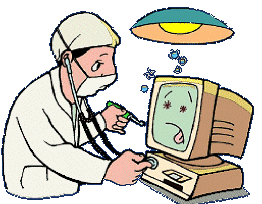Dr. J wrote an article for a shrinky publication about how she was carefully planning her retirement with a one-year lead time. Things did not go quite as expected and she wrote a sequel detailing all the distress of her well-laid plan going totally awry. Dr. J kindly agreed to let Shrink Rap re-run the second segment of her story.
* * * *
* * * *
I find it an ironic and even embarrassing fact that my prior article was mailed out on the very same day on which, instead, I abruptly announced my permanent retirement . I retired five months earlier than my patients and I had expected, and much earlier if you count the many prior absences that occurred in the Fall. After a full year of working on terminations, my hopes and plans for that year, my high clinical expectations. This is what really happened.
This is definitely an odd little autobiographical piece following my own recent medical history, which, unfortunately, is necessary to understand the quality and prematurity of my retirement, and the consequent effects on my patients and me. Just before Labor Day, I suffered a surprise episode of severe atrial fibrillation, caused by a ruptured mitral valve chorda. I was out for most of a week for a fast work-up, and then out again just before the planned but postponed surgery for over a week in September, in the hospital for a near-sepsis severe abscess at the coronary angiogram site. That was followed by being in and out for pre-surgery-related reasons. I was away from early October through mid-November for the successful mitral valve repair, but it was complicated by a horrifying post-op delirium/reactive paranoid psychosis.
I learned, in a personal way, a lot from that all-too-common post-op experience- things that patients had told me about psychosis in so many ways in the days when I treated psychotic people. These words are carefully and precisely chosen by me: By being told that I was wrong about my memories of what happened, what I had perceived to be absolutely true, I was relinquishing memory ownership, and that is a very, very bad thing. It costs, deeply. It shakes you to your bones, especially since nothing in my mind has yet changed about those memories of mine feeling correct. Post-op delirium or psychosis occurs up to 50% of the time after major invasive surgery, especially cardiac, and yet it usually goes undetected unless it is the noisy kind, as mine was not. It very often evolves into PTSD, as mine did. It became part of the weave of my early retirement.
In early September, to quote one very perceptive soul, I had been “la-dee-da” about my impending leave for open heart surgery. Such serious crises were in some patients’ lives, dying loved ones, children plunging into mental illness, marriages falling apart, so much demanding direct attention. My surgery was mostly a lousy time for me to be disappearing on them, though all wished me well and expressed concern. My planned retirement was also a lousy time to be disappearing, as it was beginning to feel closer now, and this was a clear deletion of time and a harbinger. The leave coverage I arranged was of little comfort. At that point I didn’t feel my work was out of whack, my denial intact and working for me. An impending long leave was all new stuff to me, never having been away for more than a two- or three-week vacation, never more than two days out for illness in all these years. It seemed that my surgical leave could be a trial termination, leading to more productive work afterwards about inevitable change and loss. However, with each leave before surgery, I felt less sure of my tidy wish.
Instead, when I came home to bed four days after heart surgery, no la-dee-da affair at all, with too little energy to do more than lie there, an effort to produce sound bites, PTSD came roaring in behind the untreated post-op paranoia. In spite of depletion of all energy, my body had not lost the capacity to experience terror, day and night. I made a truly desperate phone call to a Baltimore healthy whom all of us here know and deeply admire. He could hear all he needed to know in my voice. The kind man arrived that same evening, came to where I was bed-bound and listened patiently. He returned until I was able to drive to his office, and I’ve been seeing him since. He has been, as I had experienced in my analysis with a very special woman, useful beyond description. I underline this important revelation because of that despicable New York Times front page article of 3/6/2011 by Gardiner Harris, the one about healthys giving up doing therapy. It deeply offended me, saddened me, and left me feeling that maybe it’s a good time to “get out." It so minimized the incredible need for healthys to remain extremely capable, compassionate and wise psychotherapists, because I have also needed his medical expertise.
Sometime in early November, overlapping cardiac recovery, I developed inexplicable atypical, severe bilateral leg pain at night, resulting in terrible insomnia with sleep-deprivation and/or grogginess from meds meant to alleviate those. I had increasing difficulty with concentration, memory, and attention as the psychological sequelae of both sleep deprivation and PTSD, which I definitely had. Nonetheless, I soldiered on and then returned to practice. I was limping along as a therapist, occasionally looking puzzled when there was nothing puzzling. At times, I said things that were misworded or syntactically upside-down, without enough awareness except for the consequent expressions on my patients’ faces. I looked exhausted and was. I was beginning to scare patients about my health, I think. They were worried now, and some would say so. One woman opined that I had underestimated what this surgery would take out of me. (That was certainly true.) When asked, when there was a clear need to explain my inexplicable degree of exhaustion, I did, and one patient suggested Ambien, which of course has a humorous side to it. I didn’t know the cause of my pain-generated insomnia, so I couldn’t give my patients very helpful answers. In total, given all the interruptions, I was at work for about eight or nine scattered days after September 1st until January 1st.
I too was seriously worried, eventually becoming flat-out desperate, since none of the specialists that I was seeing urgently, knew what was wrong to cause such intolerable leg pain at night. Though never my very kind and talented choreographing internist (to whom I am forever indebted) nor my healthy, some specialists diagnosed psychogenicity. Two very bright others worried about a possible paraneoplastic syndrome. Patients were aghast that I’d cancel again and again for more testing, with less and less time left for our treatment. Some were getting almost frantic about these appointments of mine, and most had a hopeful suggestion, a theory, a favorite doctor. Those who really needed to be seen regularly, I tried hard to persuade them to transfer to new therapists at that time, with limited success.
I realized things were subtly turning upside down in my office. Those few patients I saw during those remaining days were trying to help me now. Therapy was about anticipated loss, no doubt including loss of control over my help and presence. My desperate effort was to be the kind of therapist I’d “always” been, wanting so much to go out with my vision of helpfulness and my self-respect intact, with a sense that my thirty-five year career had ended well. I wanted to make it to the finish line that I had chosen, with the final work I had hoped for with each patient. There were so few actual patient sessions that this was mostly wishing, not occurring, in my office, but my head was swirling with how to do it. The Thanksgiving holidays fouled up my office scheduling again.
Then, having had pain-related insomnia all night for days, with so many patients still unseen or seen only once since August or September because of all my leaves, I fell asleep on two longstanding patients. I apologized profoundly and explained. I knew then, really knew, that I must simply stop.
I went straight home and called a very dear friend and colleague who came over to help me make a plan, advised me with her ever-present wisdom. Afterwards I called every patient to say that I was taking yet another leave until mid-January, unable to say to them, or definitively to myself yet, that this would be a final leave, and certainly unwilling to do so right before the holidays. But I did know, and couldn’t stand to feel it all at once. My explanation to my patients was uncharacteristically vague because in fact my malady was. Sometimes I had to communicate my “leave” on answering machines, giving my news and saying I’d call back, a brutality of modern electronic life. I always left my home phone and home email for them to contact me. I worked on a list of therapists whom I thought would be good matches, leaving preliminary queries for those healthys and non-healthy therapists, all of whom responded so generously, giving of their tight practice time, such gifts
With no progress in diagnosis and treatment for my unusual and intense leg pain, with so many tests and consultations ahead, with my insomnia unremitted, I faced calling every patient to say that there had been too many leaves, so that in fact I was retiring early, as of now. That was an indescribably horrible week in my life. Most of them had wondered if that was coming, so not a great surprise, but instead they were shaken, very disappointed, wondered if I was dying of something- no matter how I tried not to be alarming, up against this abrupt loss due to an unknown, without any control at all over the matter. I gave each my specific referral. I invited each patient to think about whether he/she would like to come by my home at some future point for a brief good-bye in person. I moved my office furniture out. Only in mid-March, with the help of my healthy’s medical acumen, was my pain diagnosed as originating from an unusual configuration of lower back spinal disease sites, with fairly extensive lumbosacral surgery. Relief came in between diagnosis and surgery with those lovely steroid injections in the spine and through the foraminal canals by a menschy ace needler. After surgery, I just might have made it back to work by the original retirement week.
Such truly chaotic endings for my patients, and retirement for me, after knowing a few of my patients for almost twenty-five years. I had never imagined becoming ill in a way that made for such a scheduling mess, mystery, and ultimately trouble working. It grieved me so much that I kept plugging along until the worst of all insults, falling asleep with those two patients, patients who were sharing their secrets and their vulnerabilities. I have always been merciless in my mind when patients have told me about former therapists who did this with them. I have seen the cost of that rejection to them. I am deeply fortunate that these two were so healthy as to understand what this was about, and that I had long track records with them. But who knows if that day will be without any consequence to them, last sessions that they were? Both chose to come say good-byes at my home and both expressed gratitude for our work. They seemed free of such consequences, but the psyche runs so deep and their need to protect me so probable.
When I had invited each one to come say good-bye if they so chose, I made it clear that either way was fine, something to think about. Every one wanted to, though some wanted to postpone it until they didn’t feel so raw, until I was better, until the flowers were up, until they felt their new therapist could be a cushion, and so forth. Since then virtually all contacted me, patients whom I was actively seeing when I retired and many who only very occasionally still came in from the past, who asked to come for these brief visits. What I hadn’t anticipated was how powerful these meetings would be, then ending when we both felt it was a natural moment, when we both could tell we’d said what had been important to say, when we both stood up together. Inevitably each recently seen patient commented on their relief that I looked so much better, i.e. that I didn’t look like I was at death’s door, as I had. Each had their individual things that they wanted to say, realized that they’d needed to say, and sometimes saved questions too. These were intense, condensed opportunities to put their questions and thoughts right into context, to give them historical meaning, because of our years of relationship. I hope and believe that many left with something useful to think about.
I saw how very brave these fine people are when they chose to come here and handle the finality of these good-byes with such focus, direction, and emotional candor in a different setting. They wanted to tell me how far they’ve come, what they had accomplished, what they are still working on and probably always will be. Most told me that they had felt cared about and could hear my “helpful voice” internally. As they said that, they patted their chests, not their heads, every one of them. They wanted to thank me, and I certainly wanted to thank them too, hand automatically going to my heart too, for the privilege of watching their growth, their hard work, for sharing themselves with me and more than that. They gave me the chance to say good-bye, some aware that they were doing that for me too.
It certainly has been useful for me to see them, a way to offer small amends for such a desperately awful ending, to be reassured myself, and for me to have my opportunity to grieve after each visit. I am infinitely grateful to all of them for their enormous patience , their genuine good wishes, their willingness to try new therapists and usually connect well with them, their courage, and these not-so-easy good-byes in person. They have been heroic. My gratitude for my surgeries by talented surgeons had been overshadowed by the black dust of this forced retirement. Thanks to my former patients and my own psychotherapy, I am now able to feel fortunate about that and my career again, in spite of the robbery of my tailored retirement plan and my lost absolute insistence on control over that. We do know we don’t have that, then we learn that we don’t have that, and then we learn that, and then learn that again, and then I suppose one day we may get that.
Reprinted from The Maryland healthy.






















Showing 11 comments